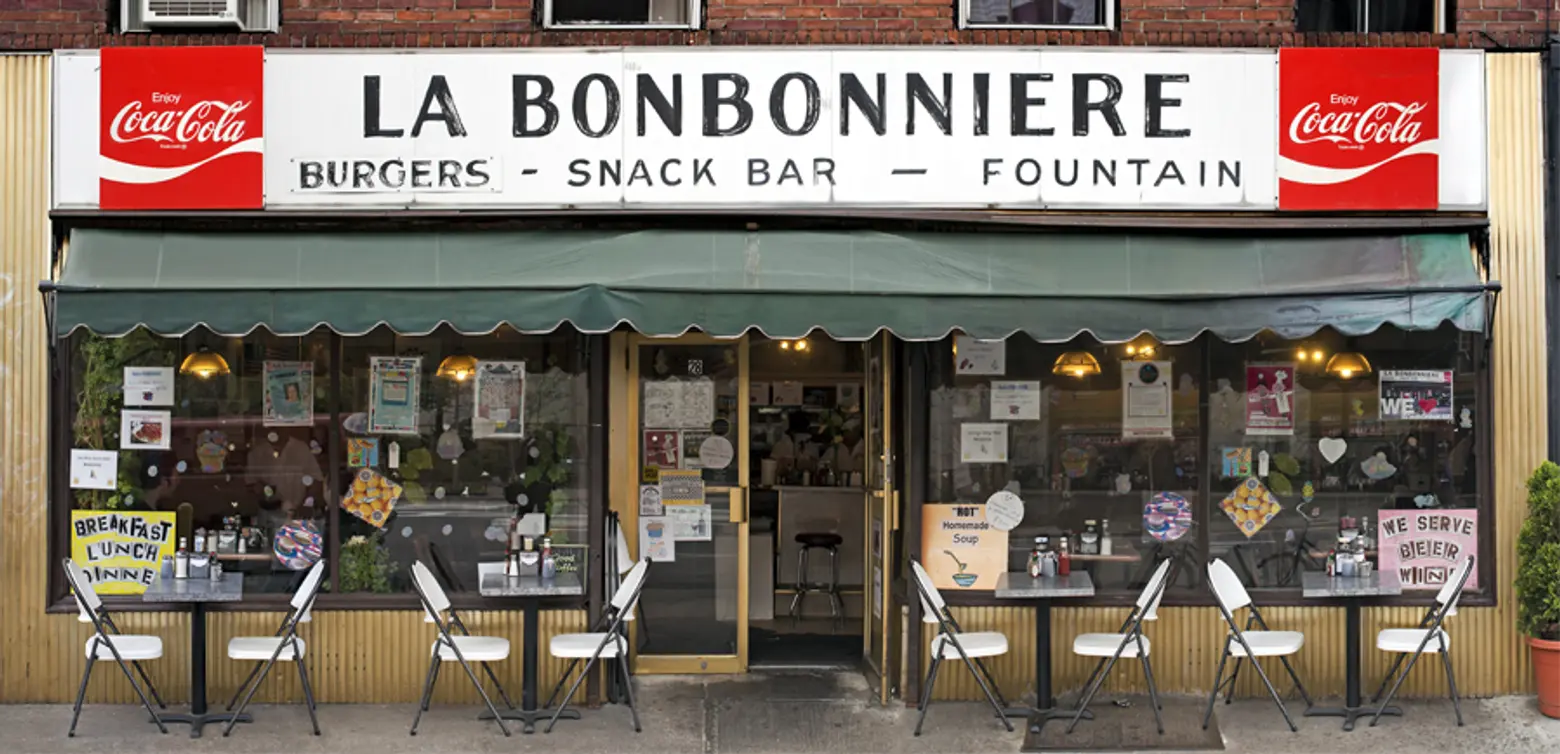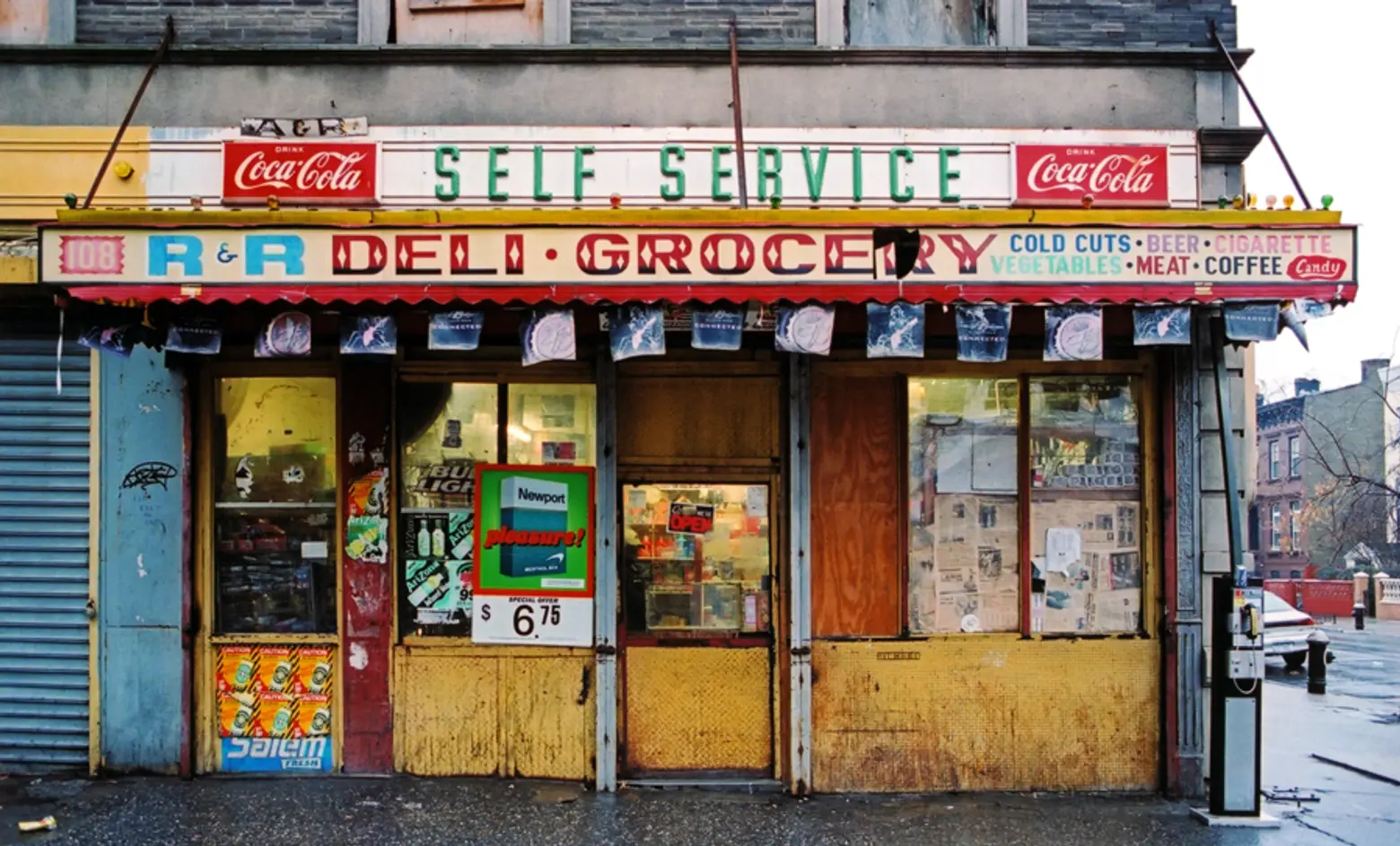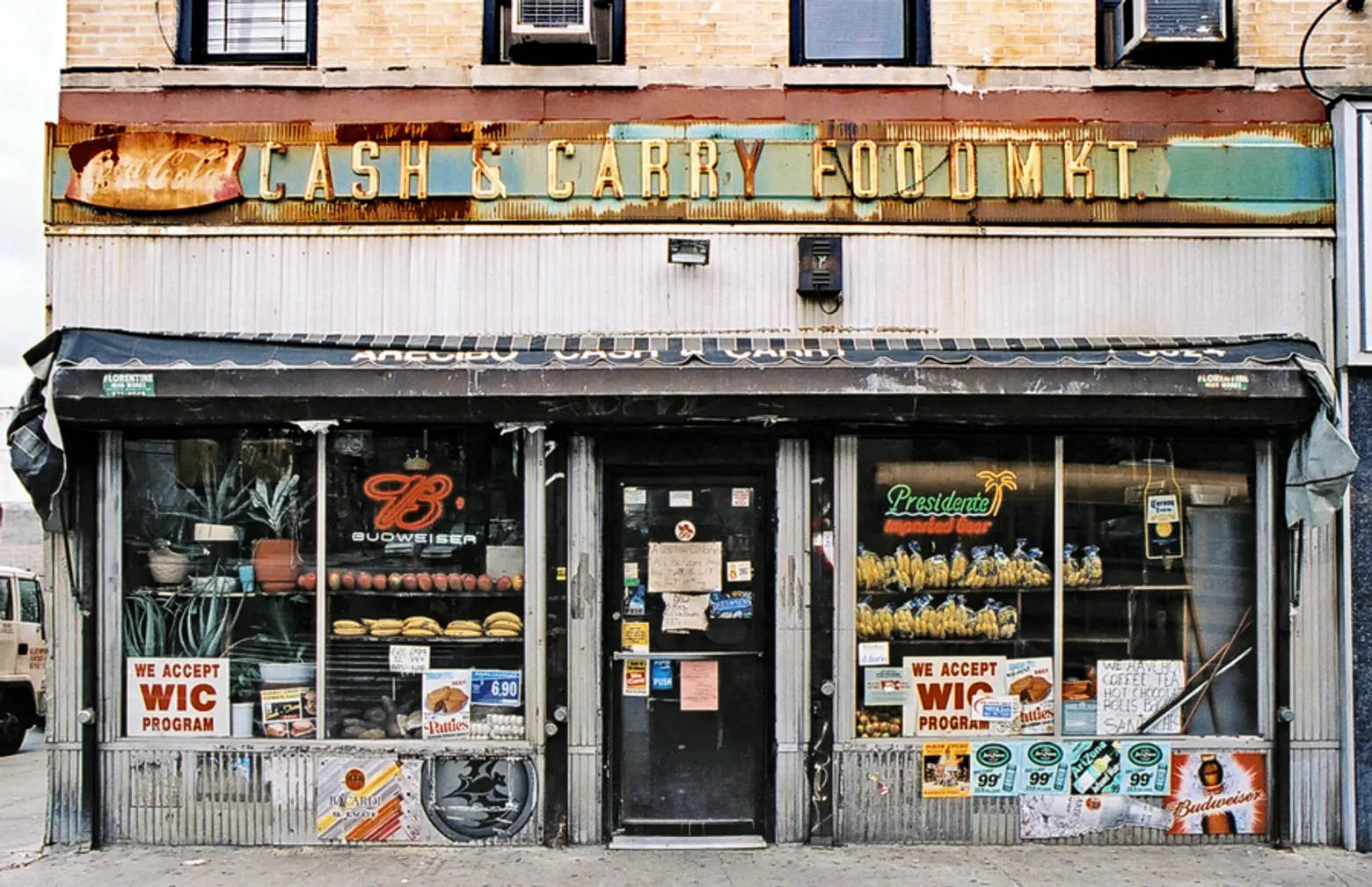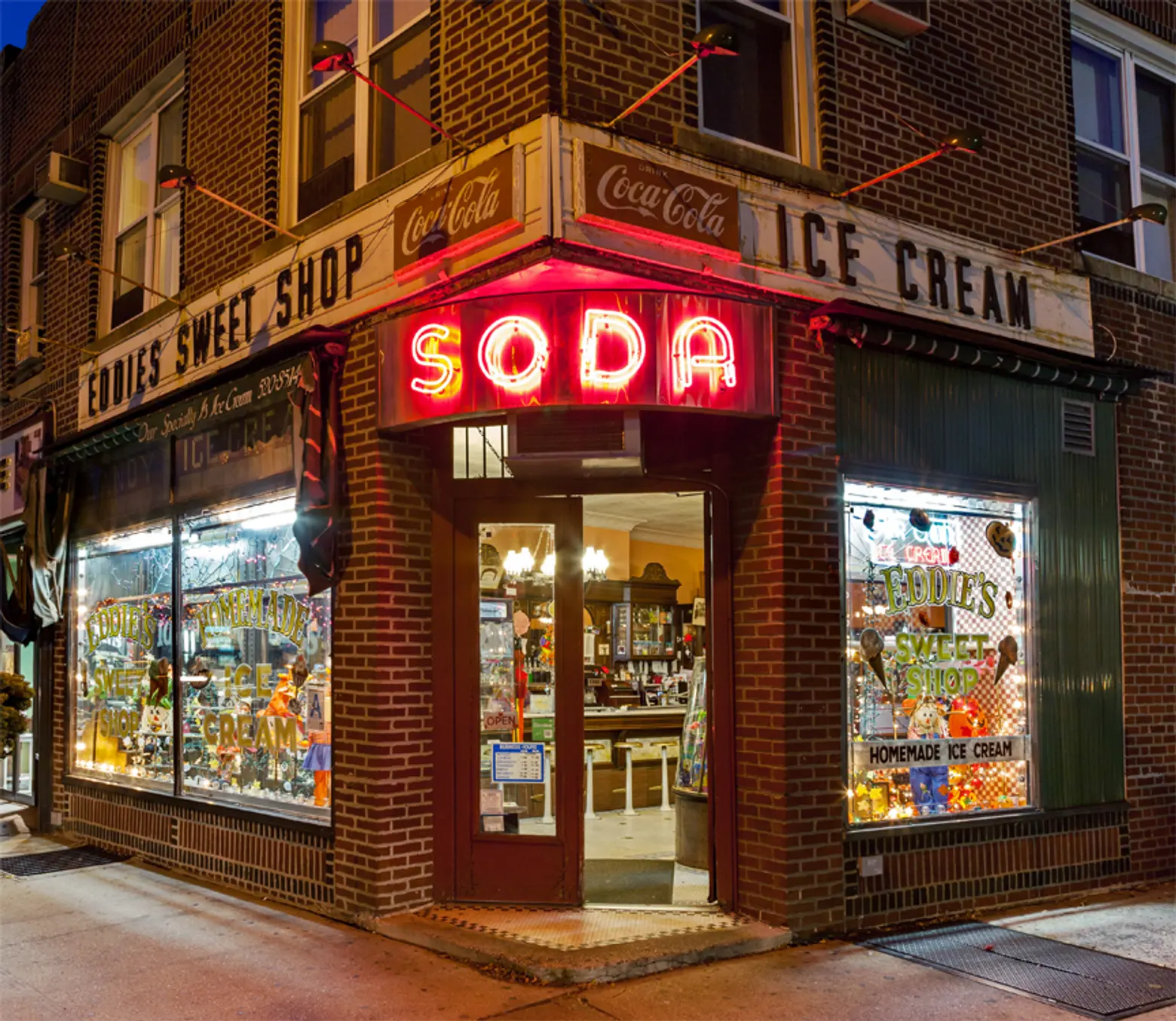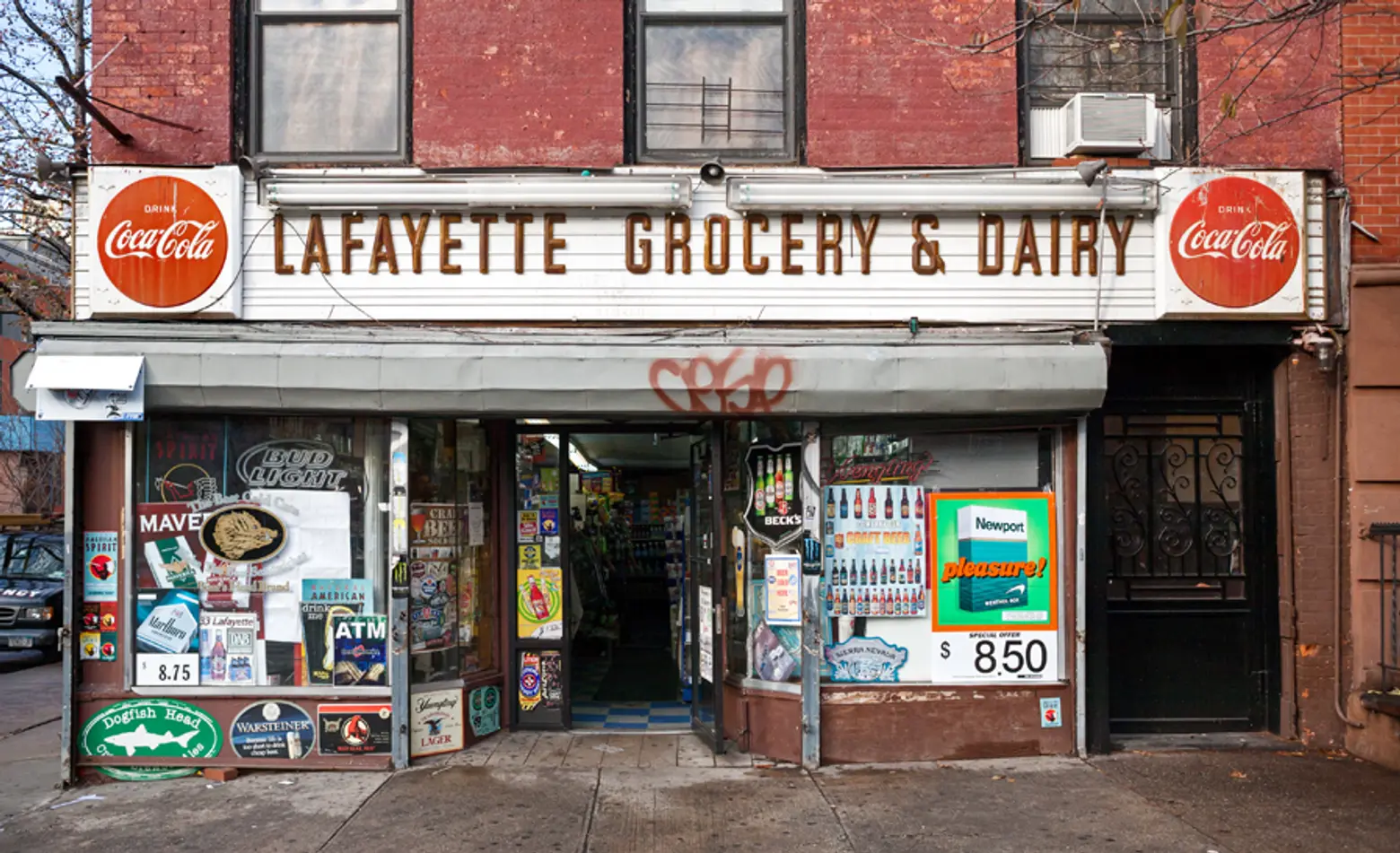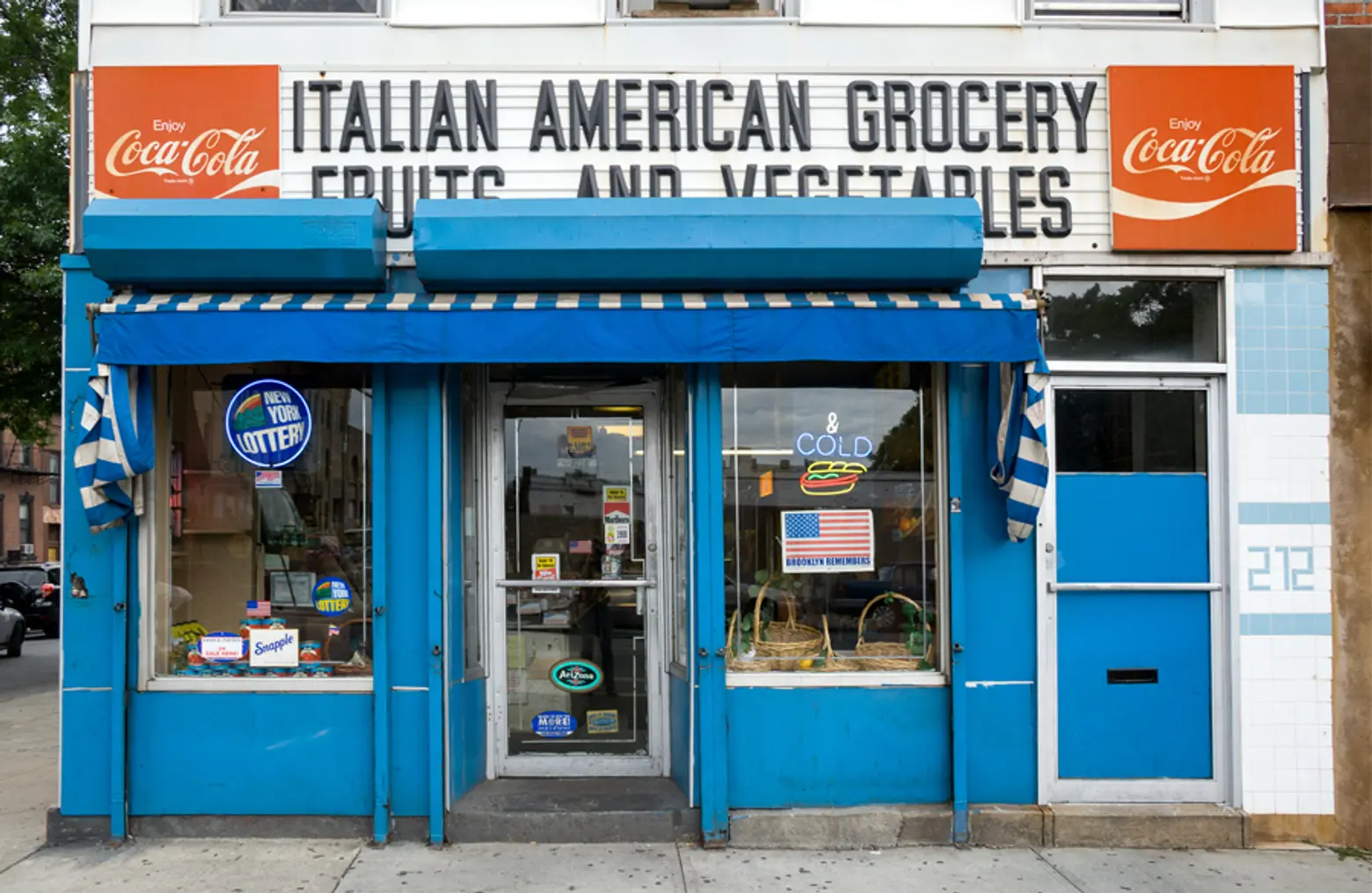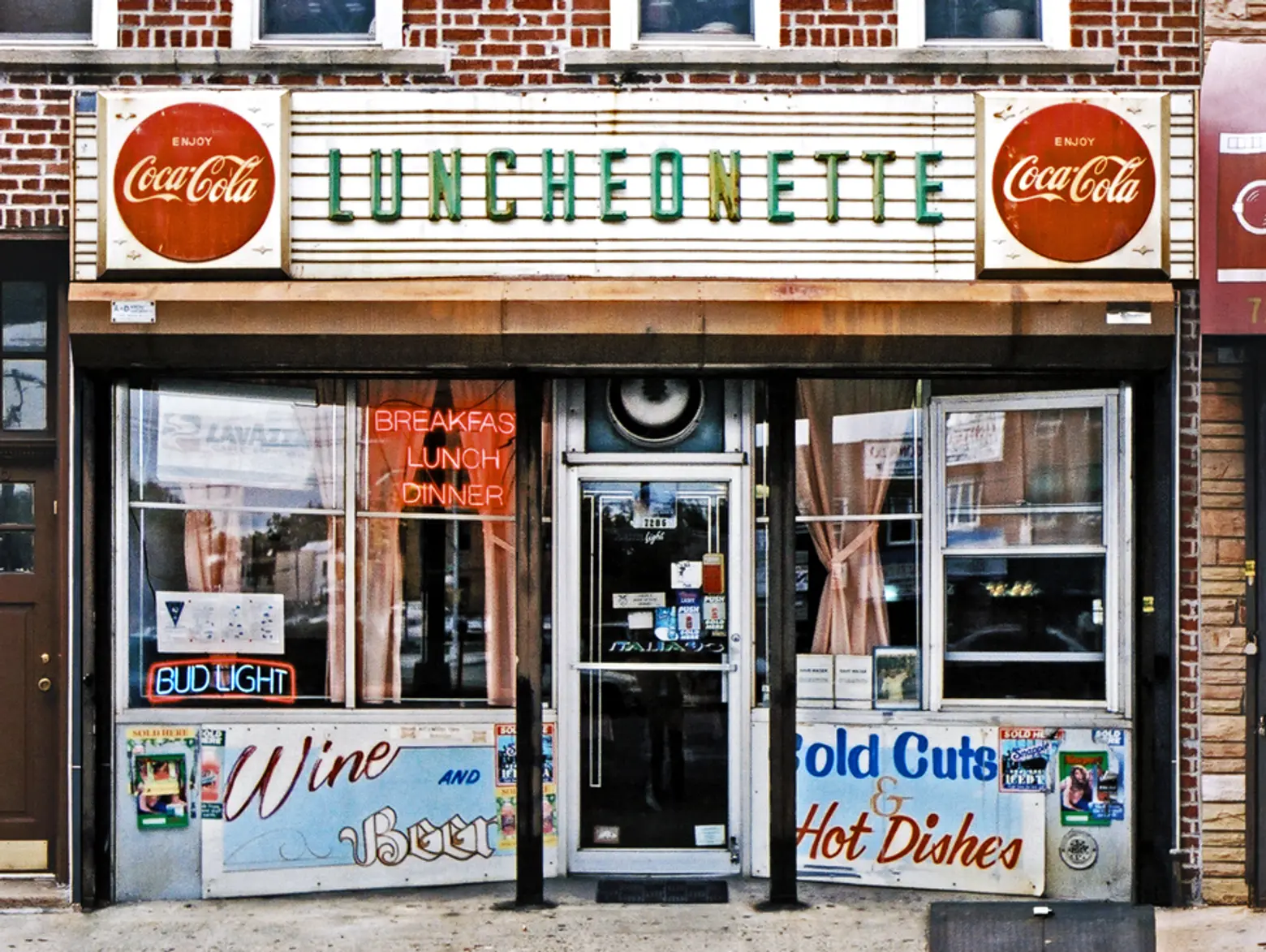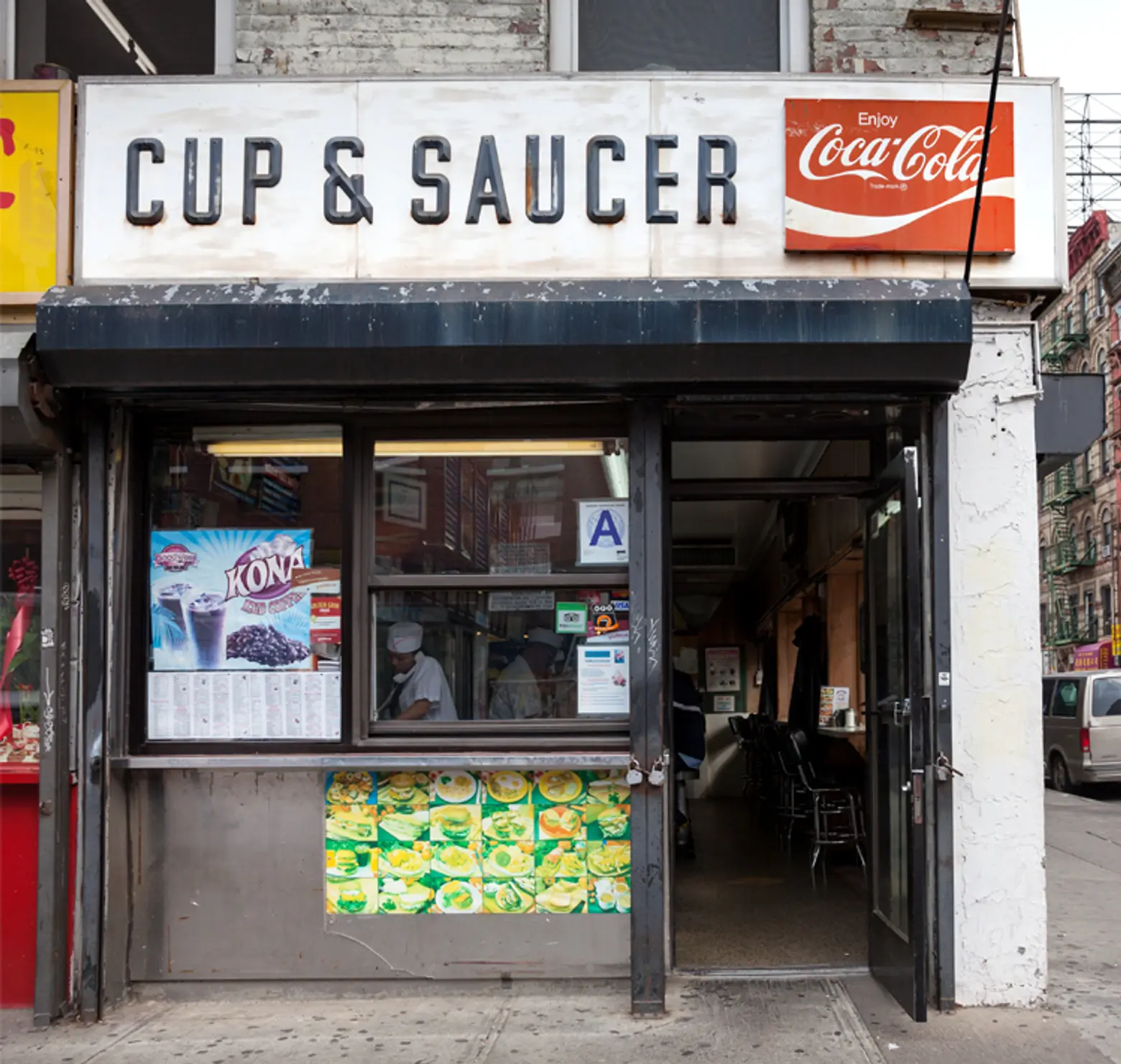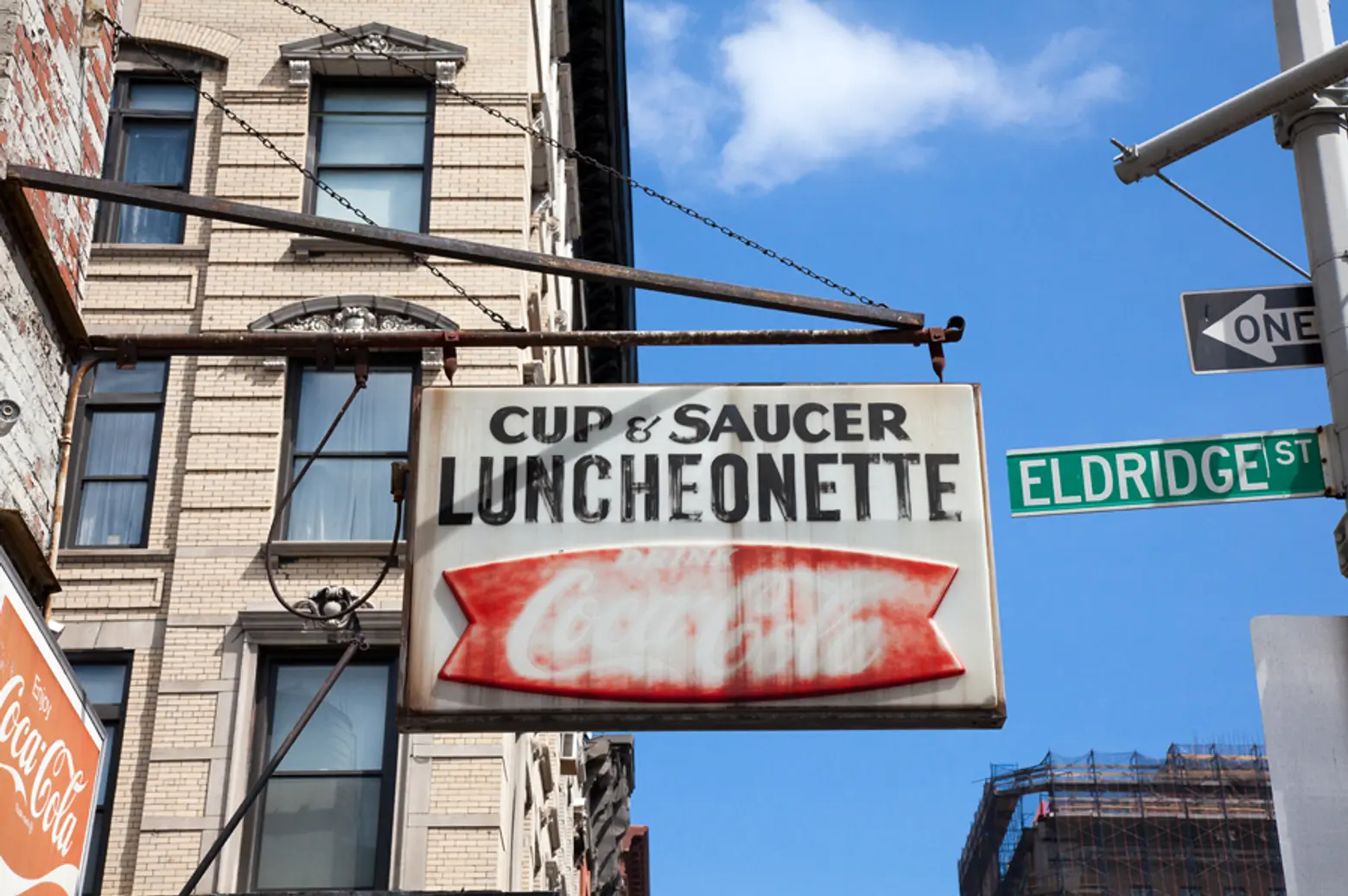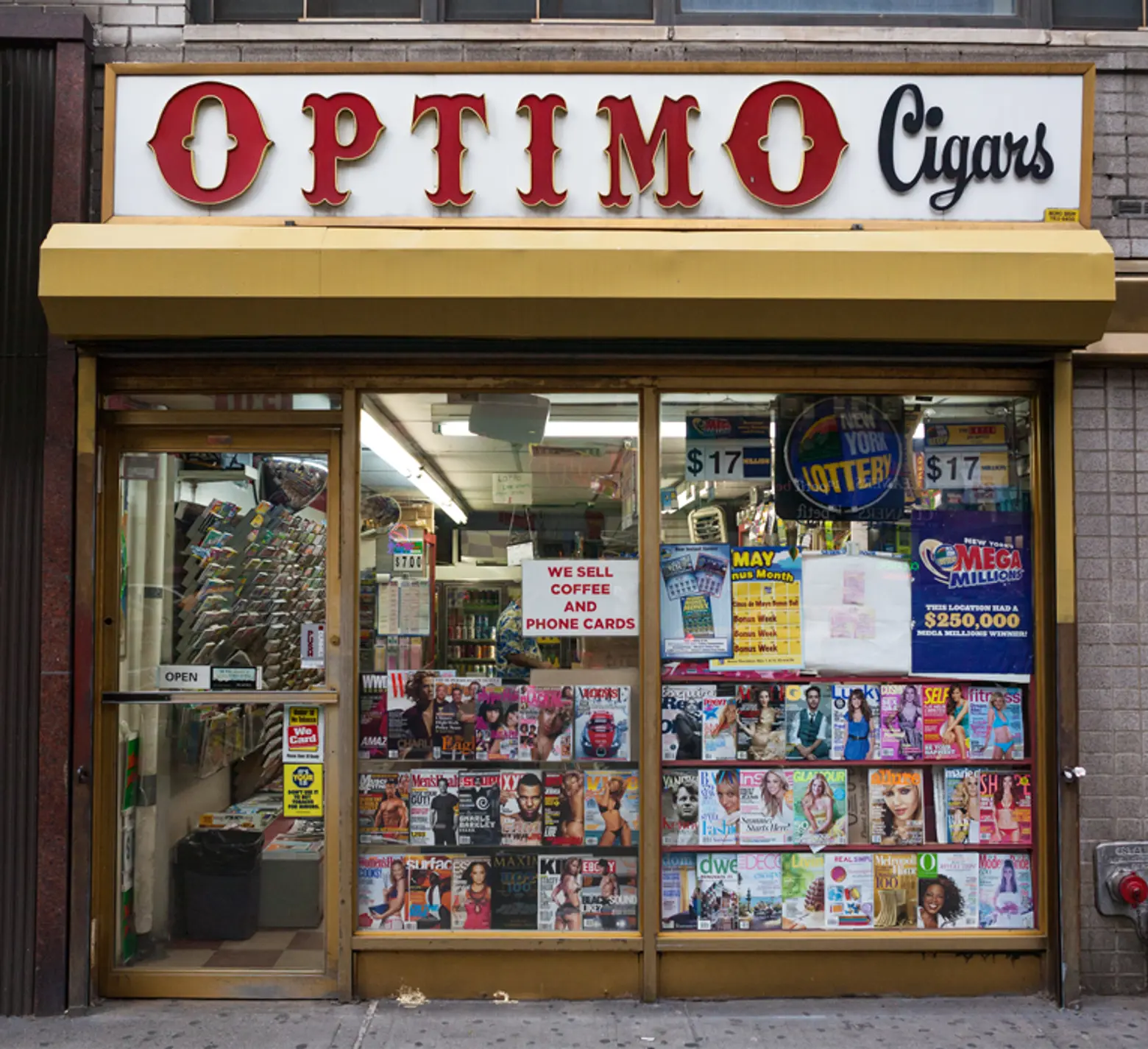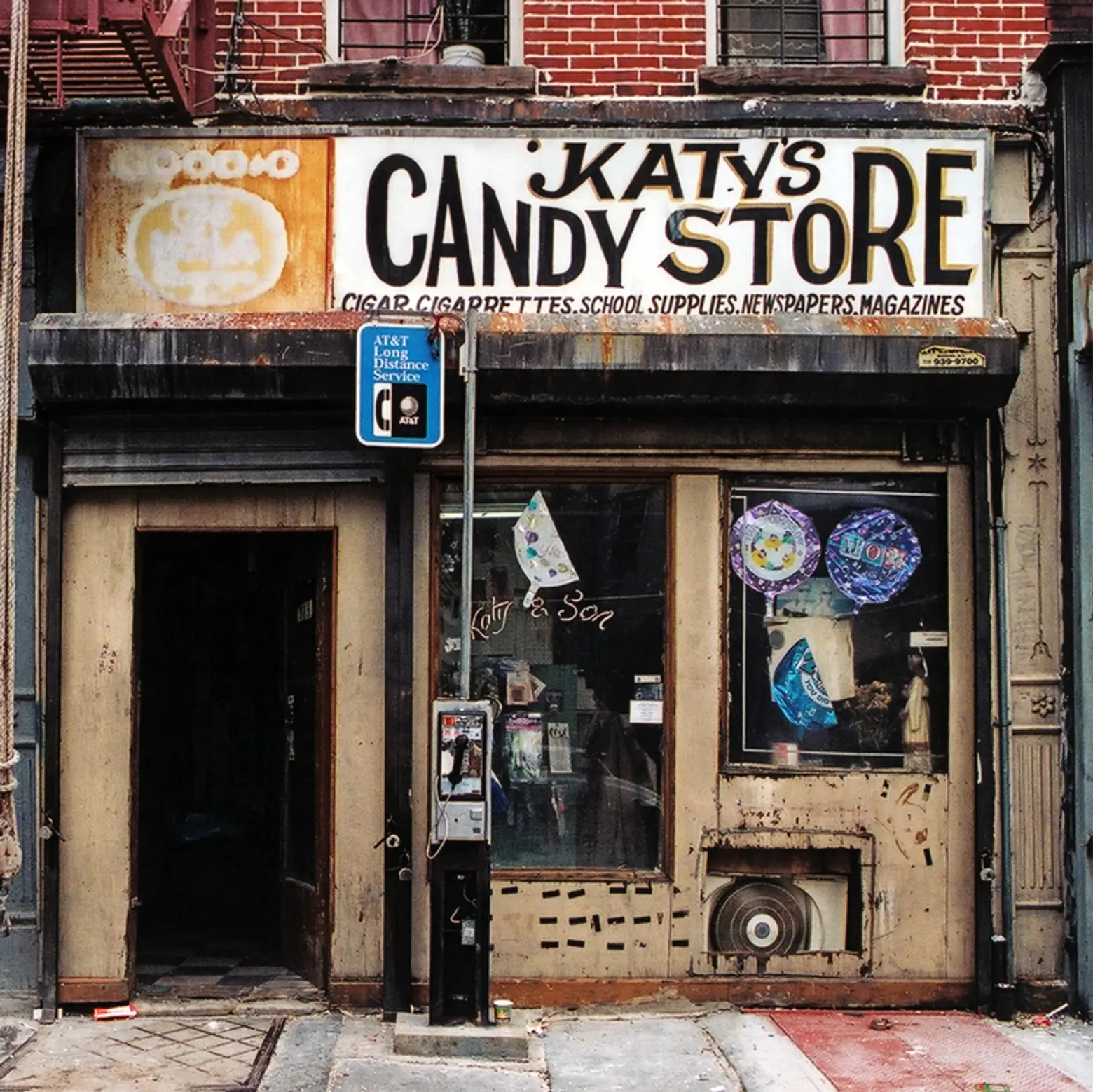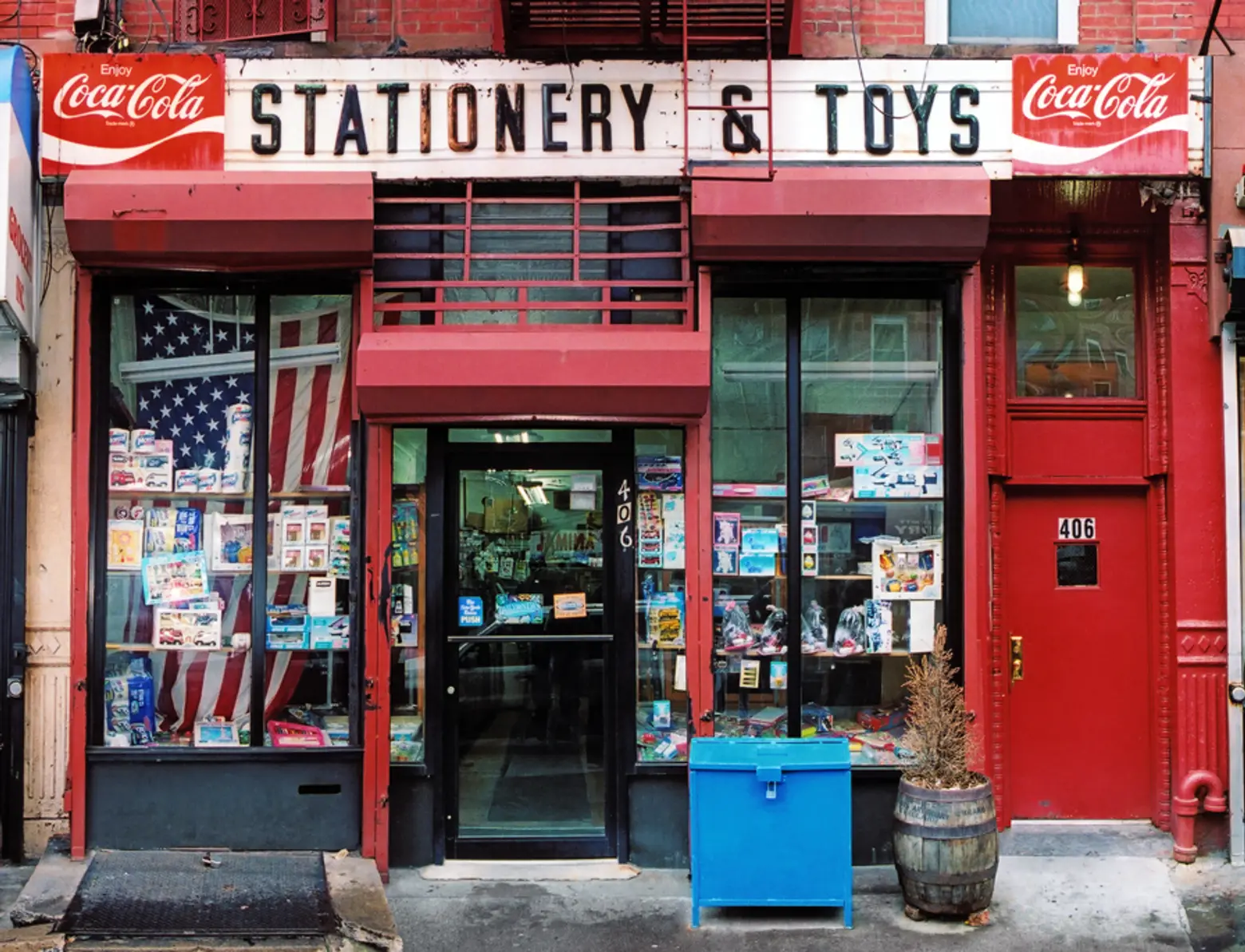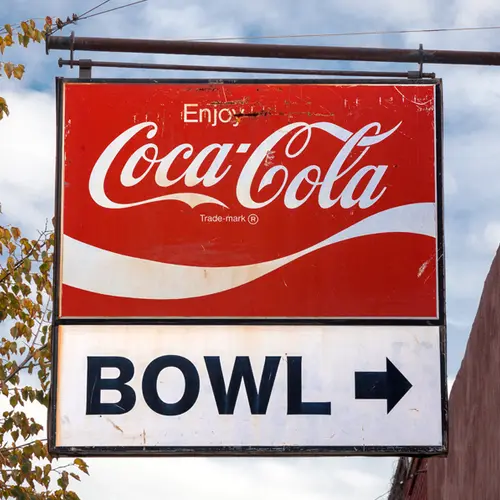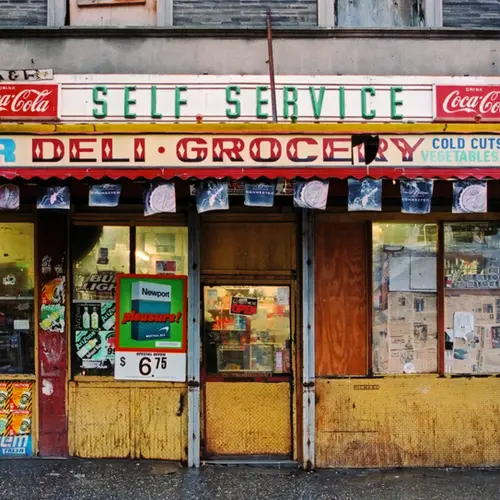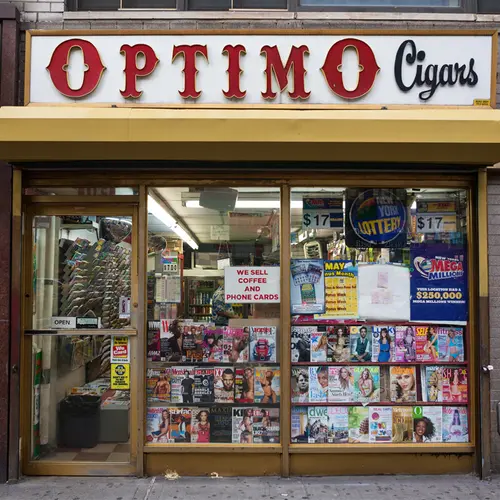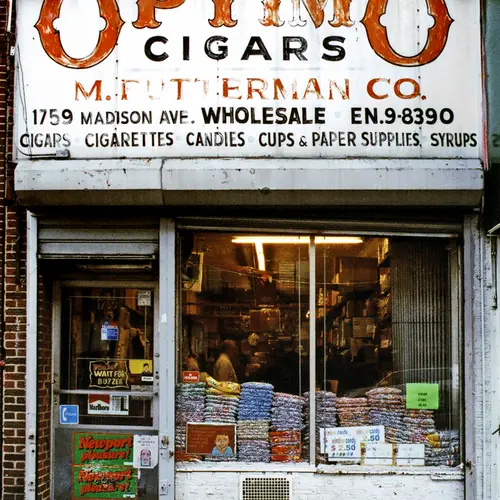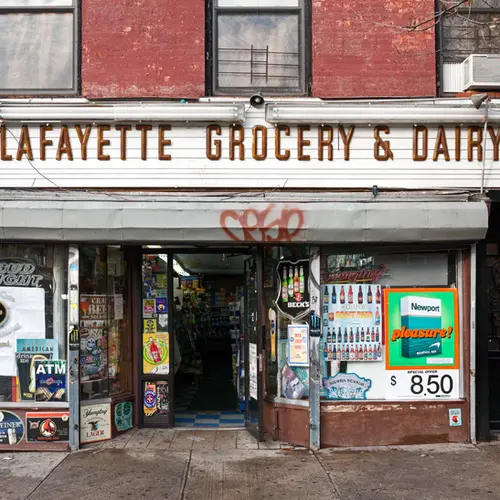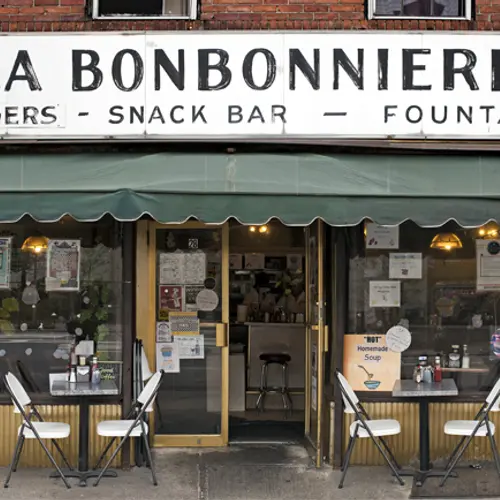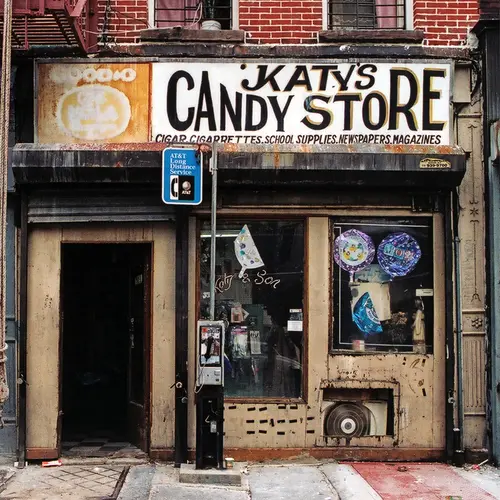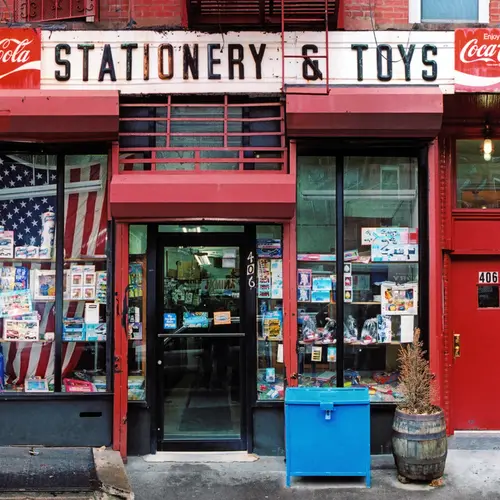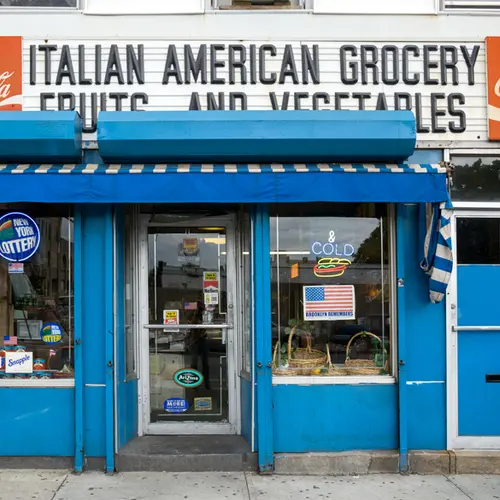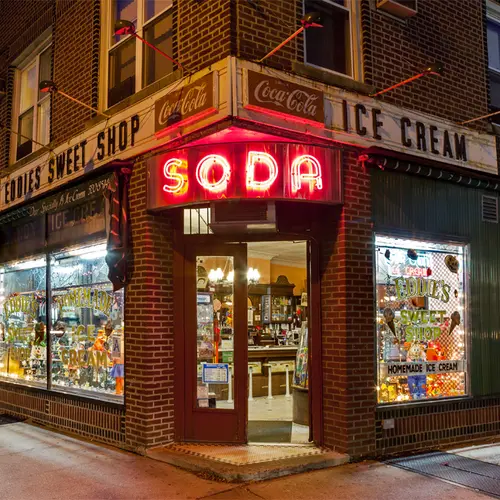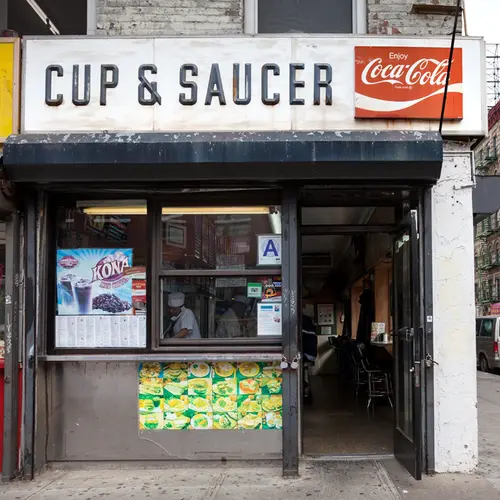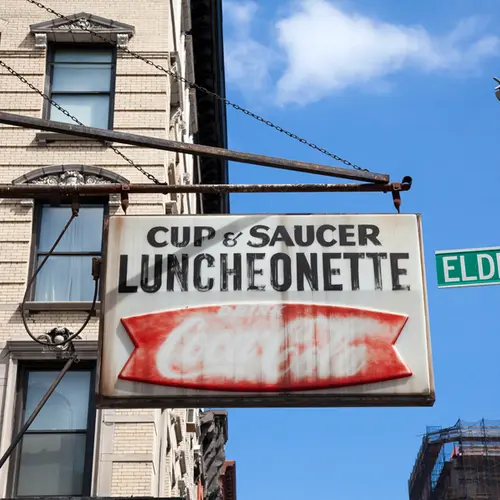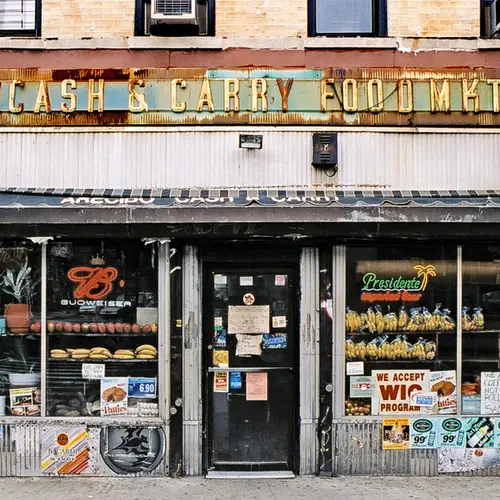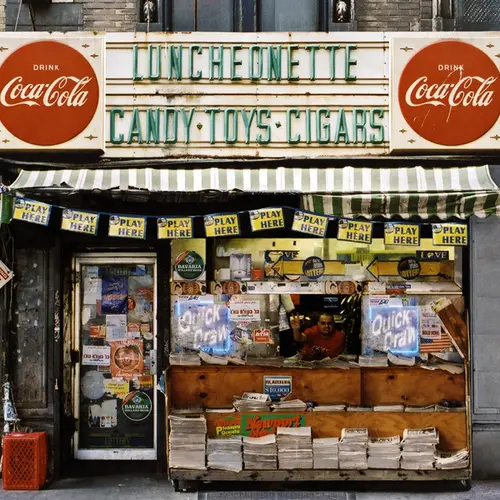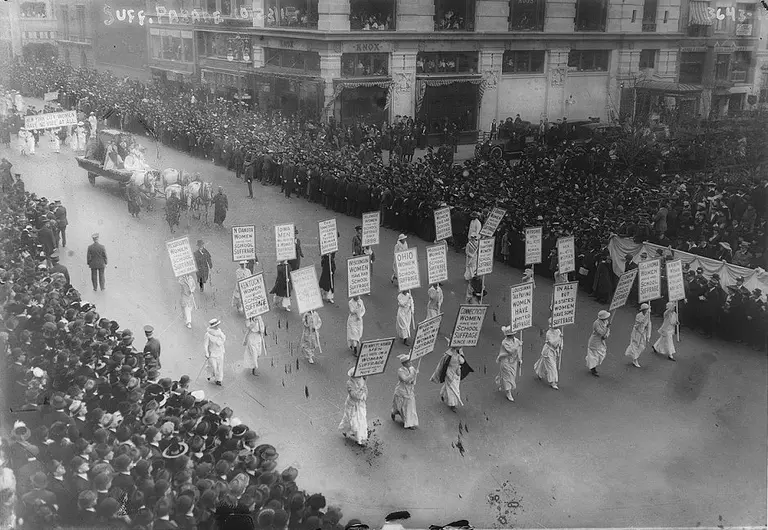The Urban Lens: Documenting New York City’s Vanishing Privilege Signs
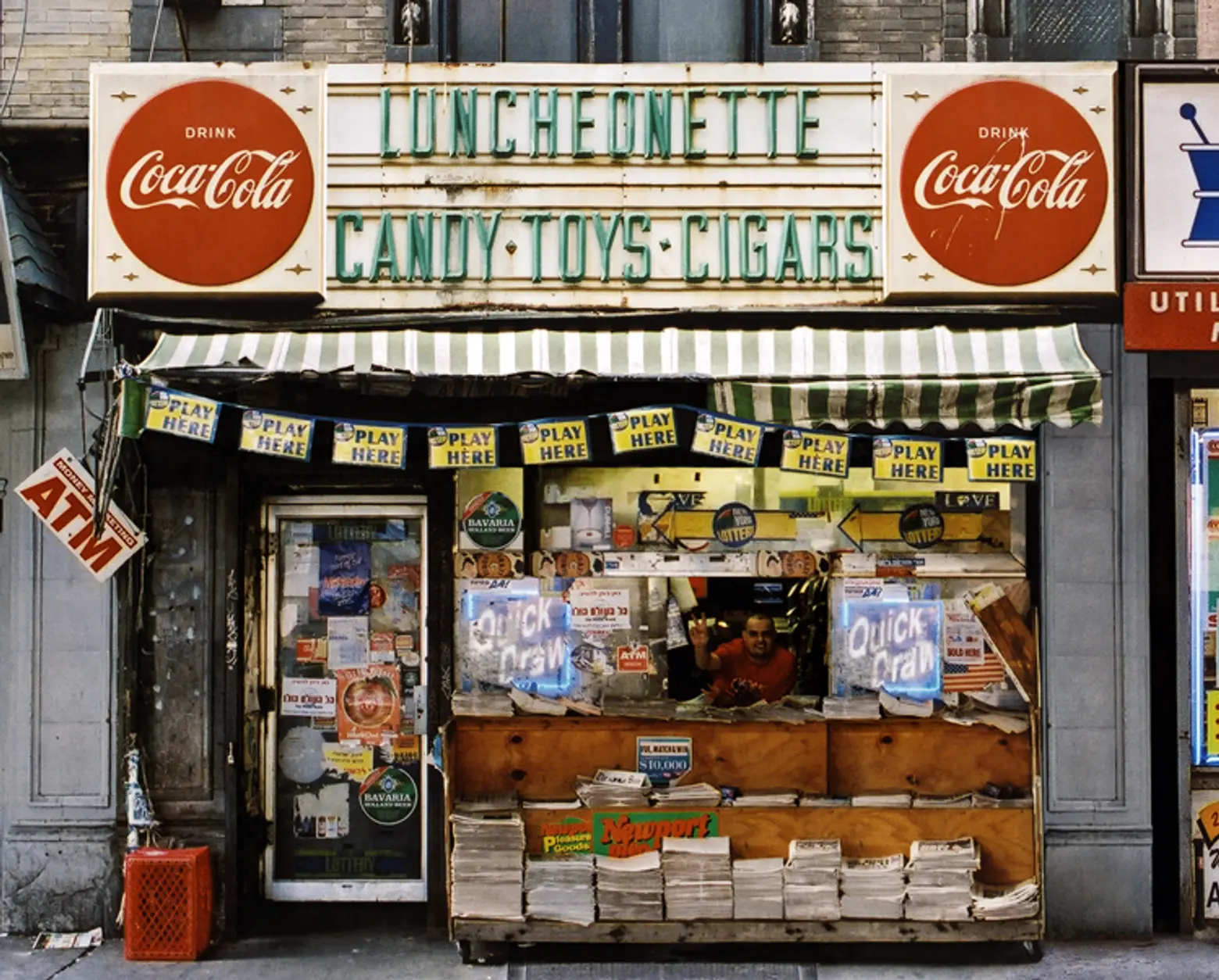
6sqft’s new series The Urban Lens invites photographers to share work exploring a theme or a place within New York City. In the first installment, award-winning authors and photographers James and Karla Murray brought us 15 years of images documenting the changing storefronts of Bleecker Street in Greenwich Village. Now they share more amazing images, this time of privilege signs, an industry term for the promotional signs installed by large corporations on storefronts. Are you a photographer who’d like to see your work featured on 6sqft? Get in touch with us at tips@6sqft.com.
Privilege Signs are an industry term for the promotional signs installed by large corporations such as Coca-Cola and the Optimo Cigar Company. They were popular in the 1930s through 1960s and received their name because store owners were given the “privilege” of completing the signs with their own copy. Large companies benefited from the signs because they were an easy way of weaving a marketing campaign right into a building’s façade. The signs were not only given free to store owners, but they also brought people into the store with instant brand recognition.
Today, they read retro and antique, standing out as a testament to a business’ ability to endure even in the face of the monumental challenges in a city known for its rapid pace of change. When compiling our books on disappearing storefronts, we were immediately drawn to facades that still had these type of signs, so we’ve rounded up some of our favorites ahead.
↓↓↓
[*Note: Click on any image to enlarge it]
LA BONBONNIERE has a great example of a Privilege Sign that graces its entire length. This mom-and-pop diner has been in business on Eighth Avenue in Greenwich Village for over 85 years. Marina Cortez Arrieta and her business partner Gus Maroulletis have owned and operated this classic restaurant for the past for 24 years. Marina told us that “everything is original except the floors and the counter.” The diner is known for its breakfast staples, delicious hamburgers, as well as its homemade tuna and chicken salad.
↓↓↓
R&R SELF SERVICE, photographed in 2006, is a classic NYC bodega. Sadly, it closed in 2012 when the building was sold to a developer who modernized and expanded the storefront and apartments above.
↓↓↓
CASH & CARRY FOOD MARKET was located on Third Avenue at 51st Street in Sunset Park and is a family-owned business that has been in operation since 1959. The owner, Santos Cruz, told us a fascinating story explaining why the sign was on the verge of removal:
“Our sign was given to us by the Coca-Cola Company when we opened in 1959. My brother founded the store, but when he retired he sold the business and the entire building to my cousin with a verbal agreement that when my cousin was ready to retire he would keep the business in the Cruz family. My cousin didn’t keep his end of the promise and instead kept the building and business for himself. So I’ve been forced to pay my own cousin an ever-increasing rent to the point that he’s made it so expensive for me that I am forced to move the business. My family and I bought the building next door and by the end of 2005, we will shut down and move. Unfortunately, we will have to replace the sign and our store will lose some of its original flavor.”
↓↓↓
EDDIE’S SWEET SHOP, photographed in 2010 for our book “New York Nights,” is located on Metropolitan Avenue in Forest Hills and has been in business for over 90 years. It’s known for its homemade ice cream in over 18 flavors. The present signage is from 1968, but the interior includes the original marble counters, stained glass windows, tin ceiling, and inlaid wood cabinetry. Present owner Vito Citrano told us that he “first worked as a counter-boy for Eddie and then took over the store when he retired, but didn’t change a thing.”
↓↓↓
THE LUNCHEONETTE on New Utrecht Avenue near 14th Avenue in Borough Park was in business for over 75 years. The storefront dates back to the late 1920s, but it was re-fronted in 2007 when it changed ownership.
In the case of the Coca-Cola Privilege Signs, representatives from the company or local bottling companies offered retailers a choice of signs in a variety of styles that could be customized by the store owners. The most popular signs that we have photographed are the Coca-Cola “Goldline” signs, named for the rails that the individual letters could be attached to. Custom letters for the Goldline Signs came in three varieties, including Roman Metal Letters or Gothic Metal Letters made with porcelain enamel and furnished with welded studs for mounting, as well as spacers for setting them in place. Cast Aluminum Letters with baked paint were also available. The custom letters were available in sizes ranging from 10 to 15 inches and in three colors; green, ivory or maroon. Some have been repainted over the years so that the letters are now black, brown or red.
↓↓↓
LAFAYETTE GROCERY & DAIRY in Fort Greene was photographed by us in 2008. At this time it had its original Coca-Cola Goldline signage intact, but after undergoing an entire exterior renovation in 2009, the owners replaced the deep-set windows and entrance with a more modernized facade and failed to replace one of the letter “T”s in Lafayette, so that it is now misspelled LAFAYETE GROCERY. We always wonder what happened to that other “T.”
↓↓↓
ITALIAN AMERICAN GROCERY on Third Avenue in Gowanus, Brooklyn was in business until 2008. The Gowanus neighborhood, known as an important center for industrial and shipping activity, had a small Italian enclave centered around the area east of the canal by Carroll Street.
↓↓↓
TONY’S LUNCHEONETTE, located on New Utrecht Avenue in Bensonhurst, still had its original green porcelain enamel letters when we took the photo in 2005. Tony’s was in business for over 50 years before it closed in 2013. The owner Antonio Lombardo told us, “I bought this coffee shop in 1972. The storefront and interior are all original, including a very unique circular wrap-around counter.”
↓↓↓
CUP & SAUCER, on Canal and Eldridge Streets on the Lower East Side, was founded in 1940 as a Jewish luncheonette. Its interior boasts a lunch counter with stools, as well as a small seating area along the windows. Inlaid on the terrazzo floor is a gold cup and saucer. This small diner is co-owned by John Vasilopoulos and Nick Castanos who told us:
“We took over this luncheonette from the second owner in 1988, but we haven’t really changed a thing about it. We have the same interior and the same original signage from the Coca-Cola Company. As long as the bolts holding our sign in place hang on, we plan to keep it. Superstorm Sandy didn’t take it away, so I don’t think anything will.”
Cup & Saucer also has an overhanging Privilege Sign that swings over the sidewalk. These are rare finds in New York because in many areas, strict zoning ensures that storefront signage remain discreet and not hang over 18 inches from the sidewalk. Older stores are often forced to comply with these newer regulations. Luckily a few overhanging signs have been “grandfathered in” because their original installment predates the law.
↓↓↓
This example of an overhanging Privilege Sign in Williamsburg Brooklyn reads “BOWL” on one side and “BAR” on the other.
↓↓↓
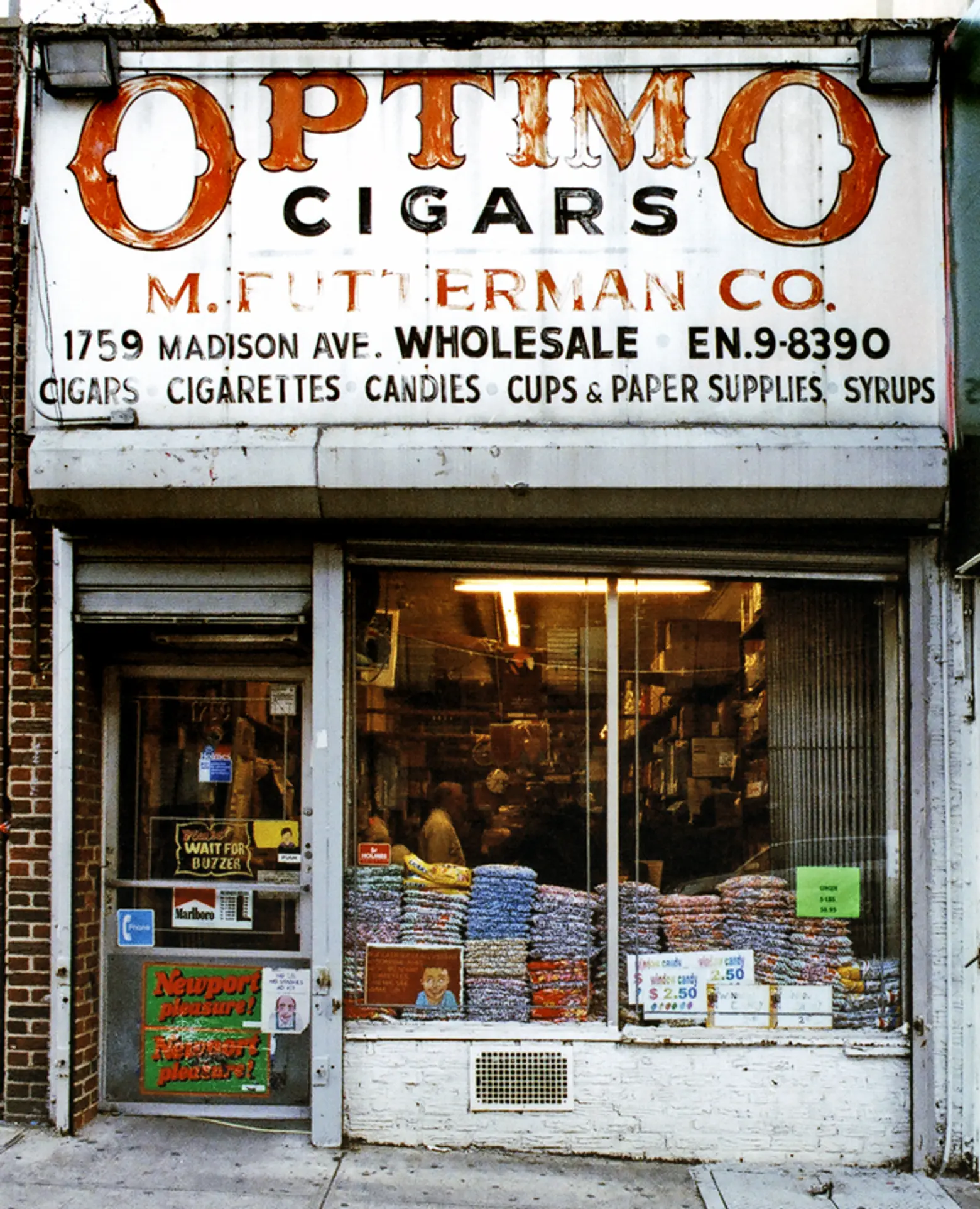
Another great example of Privilege Signs in New York City are the ones provided by the Optimo Cigar Company. Optimo was founded by Antonio Santaella, who was originally from Andalucia, Spain and became a cigar maker in Cuba during the 1870s. In 1886, he moved to Chicago to open his own factory, which manufactured many popular brands of cigars including Optimo, Marquette Club, Reformador, and Flor de Cervera. Optimo was the favorite cigar brand of Babe Ruth, and the company prospered in the 1950s and began providing Privilege Signs.
M. FUTTERMAN CO., located on Madison Avenue between 115th and 116th Streets, has an oversized, hand-painted example. The store was founded over 100 years ago and is a wholesale candy, tobacco, and paper goods family business. We loved the “Optimo Cigars” signage with its old telephone exchange EN9 painted on, but sadly the sign was replaced in 2012.
↓↓↓
OPTIMO CIGARS NEWSSTAND, once located on 14th Street, had a fine example of a plastic Optimo Privilege Sign.
↓↓↓
Many less common Privilege Signs can still be found throughout the city. We have photographed signs from Breyer’s Ice Cream, 7-Up, and even Mountain Dew.
KATY’S CANDY STORE in Bedford-Stuyvesant, Brooklyn was founded in 1969 and was one of the last penny candy stores in New York City. The owner, Katy Keyzer famously told us, “I speak three languages, English, Spanish, and Motherfucker. You’ve got to be tough to survive in this neighborhood.” Unfortunately, she was forced to close in 2007 when the landlord tripled her rent, and the store sadly has remained empty to this day. Katy’s unique privilege sign was provided by GOOD-O Beverage Company located in the Bronx. Good-O was founded in 1947 and has 100% Hispanic and Spanish-speaking employees. It is known for its flavored Caribbean and Latin American sodas such as America’s #1 Kola Champagne Soda.
↓↓↓
JIMMY’S STATIONERY & TOYS was in business for over 80 years before it was forced to close in 2014 after a new landlord purchased the building and evicted Jimmy for having an expired lease. James “Jimmy” Leary purchased the store in 1968, leaving the storefront with its original tin ceiling, long counter, glass candy case and two private wooden phone booths. Although the telephones were removed by the phone company, the booths remained and became a popular hangout for Jimmy’s pet cat, Sheshe. When Jimmy was evicted in May 2014, his cat was still locked inside the store and Jimmy had to fight his new landlord in court to have his cat returned to him.
For anyone like us who spends hours and hours wandering the streets of New York City taking great pleasure in spotting vernacular signage and unique typography, Privilege Signs are always an exciting find. We collect photos of signs and storefronts wherever we travel in an effort to preserve, photographically at least, their legacy within a constantly evolving street-scape.
James and Karla Murray are New York-based professional photographers and authors. Their critically acclaimed books, which include “Store Front: The Disappearing Face of New York,” “New York Nights,” “Store Front II- A History Preserved” and “Broken Windows-Graffiti NYC,” have garnered them numerous awards and accolades, including the prestigious New York Society Library’s 2012 New York City Book Award. Bookforum’s 20th Anniversary issue Dec/Jan 2015 also named it as one of the “Exemplary Art Books From The Past Two Decades” and heralded it as “One of the period’s most successful New York books.”
James and Karla Murray’s work has been exhibited widely in major institutions and galleries, and their photographs are included in the permanent collections of major institutions, including the Smithsonian Center for Folklife and Cultural Heritage, the New York Public Library, and NYU Langone Medical Center. In 2015, the pair were awarded the 2015 Regina Kellerman Award by the Greenwich Village Society for Historic Preservation (GVSHP) in recognition of their significant contribution to the quality of life in Greenwich Village, the East Village, and NoHo.
James and Karla live in the East Village of Manhattan with their dog Hudson.
+ Official Site
+ James & Karla’s blog
+ Instagram
+ Facebook
+ Twitter
RELATED STORIES:
